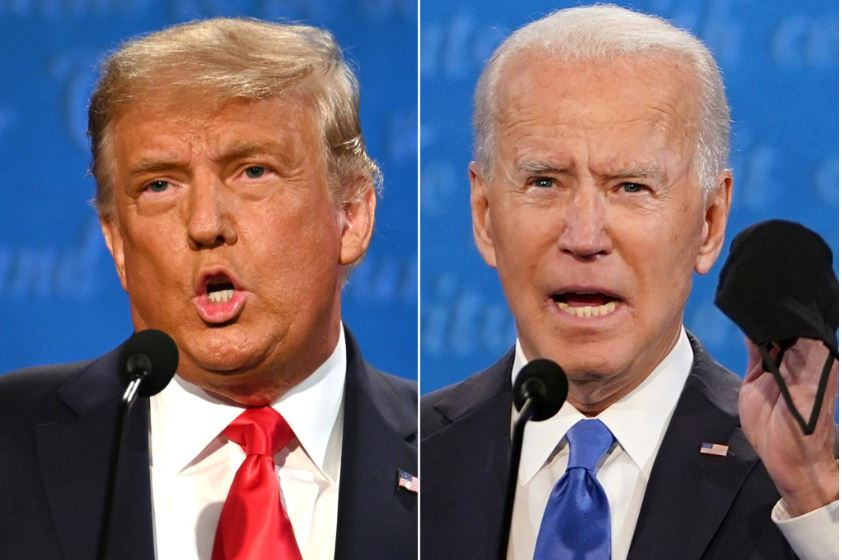
How Trump’s challenges to the 2020 election unfolded in the courtroom
Following the 2020 presidential election, then-President Donald Trump initiated a series of legal challenges disputing the results in several key swing states. The unprecedented move saw dozens of lawsuits filed across the country as Trump and his allies alleged widespread election fraud. These cases were heard in state and federal courts, including appeals reaching the Supreme Court. Despite the extensive legal effort, Trump’s attempts to overturn the results were largely unsuccessful. Here, we break down how the challenges unfolded in the courtroom and what they revealed about the U.S. judicial system.
Background: The Basis for Legal Challenges
After Joe Biden was projected to win the 2020 presidential election, Trump and his legal team, led by attorney Rudy Giuliani, launched an extensive campaign to challenge the election’s integrity. They claimed that mail-in ballots, used extensively due to the COVID-19 pandemic, were susceptible to fraud. Additionally, they alleged irregularities in vote-counting processes in battleground states like Pennsylvania, Michigan, Georgia, and Arizona.
The goal was to prove that these issues affected the election outcome and warranted a re-examination or even a reversal of Biden’s victory in those states. However, to change the election results, Trump’s team needed to provide credible evidence that widespread fraud or errors had occurred at a scale sufficient to alter the vote count.
Key States and Court Challenges
Most of Trump’s legal challenges targeted swing states where Biden’s victory margins were narrow. These cases were filed in state courts, federal district courts, and appeals courts.
- Pennsylvania
In Pennsylvania, Trump’s team argued that the state had improperly accepted mail-in ballots after Election Day and had implemented unfair practices that favored Democrats. However, state judges and the Pennsylvania Supreme Court upheld the state’s election processes, citing insufficient evidence of fraud. Even when the case was escalated to the U.S. Supreme Court, the Court declined to intervene, effectively upholding Biden’s win in Pennsylvania. - Michigan
Allegations of fraud in Michigan centered on the claim that poll watchers were prevented from observing the counting process. However, Michigan courts found no substantial proof that irregularities occurred or impacted the vote count. A key ruling in Michigan dismissed Trump’s lawsuit, with the judge stating that the allegations were based on “speculation and conjecture.” - Georgia
In Georgia, Trump’s team questioned the legality of absentee ballots and the integrity of the recount process. Although the state conducted multiple recounts, all reaffirmed Biden’s victory. Georgia courts ruled against the challenges, with state officials repeatedly asserting that the election was secure and that no widespread fraud had been identified. - Arizona
In Arizona, Trump’s campaign challenged the use of Sharpie pens on ballots, alleging that they caused votes to be incorrectly tabulated. This claim, popularly known as “Sharpiegate,” was quickly debunked, and Arizona’s courts dismissed the lawsuit due to a lack of evidence. Arizona’s state officials also verified that Sharpie use did not impact the accuracy of vote tabulation.
Federal Court Rulings and the Supreme Court’s Role
While Trump’s campaign filed several cases in federal courts alleging violations of the Constitution, none of these arguments gained traction. Federal judges consistently ruled that the campaign’s evidence was either insufficient or speculative, resulting in dismissals. Trump’s legal team appealed to the U.S. Supreme Court, hoping that it would rule in their favor.
The Supreme Court, however, refused to hear the majority of cases or issue a broad ruling that would halt the certification of results. The Court’s reluctance to intervene signaled its stance on preserving state sovereignty over election processes. This refusal effectively closed the door on Trump’s legal path to reversing the election outcome.
Challenges from State Attorneys General and the “Texas Lawsuit”
One of the most significant cases was filed by the state of Texas, which sought to challenge the election results in Pennsylvania, Georgia, Michigan, and Wisconsin. Texas Attorney General Ken Paxton argued that these states had unlawfully changed their voting procedures. Although 17 other Republican-led states supported the Texas lawsuit, the Supreme Court rejected the case, stating that Texas had no standing to interfere in other states’ elections. This decision highlighted the Court’s view that each state has the authority to conduct its own elections.
Outcome and Implications for Future Elections
In total, Trump and his allies filed over 60 lawsuits, with the vast majority either dismissed or withdrawn. As these cases unfolded, they underscored the need for concrete evidence in court and reaffirmed the U.S. judicial system’s impartiality in upholding election integrity. The lack of success in these legal challenges demonstrated that allegations of widespread fraud require substantiation and that courts remain committed to evaluating cases based on facts.
Despite the unprecedented volume of litigation, these cases ultimately cemented Biden’s victory and emphasized the strength of state-run election procedures. This historic legal battle has raised ongoing discussions around election security, mail-in voting, and public trust in the democratic process—issues likely to impact future elections.



